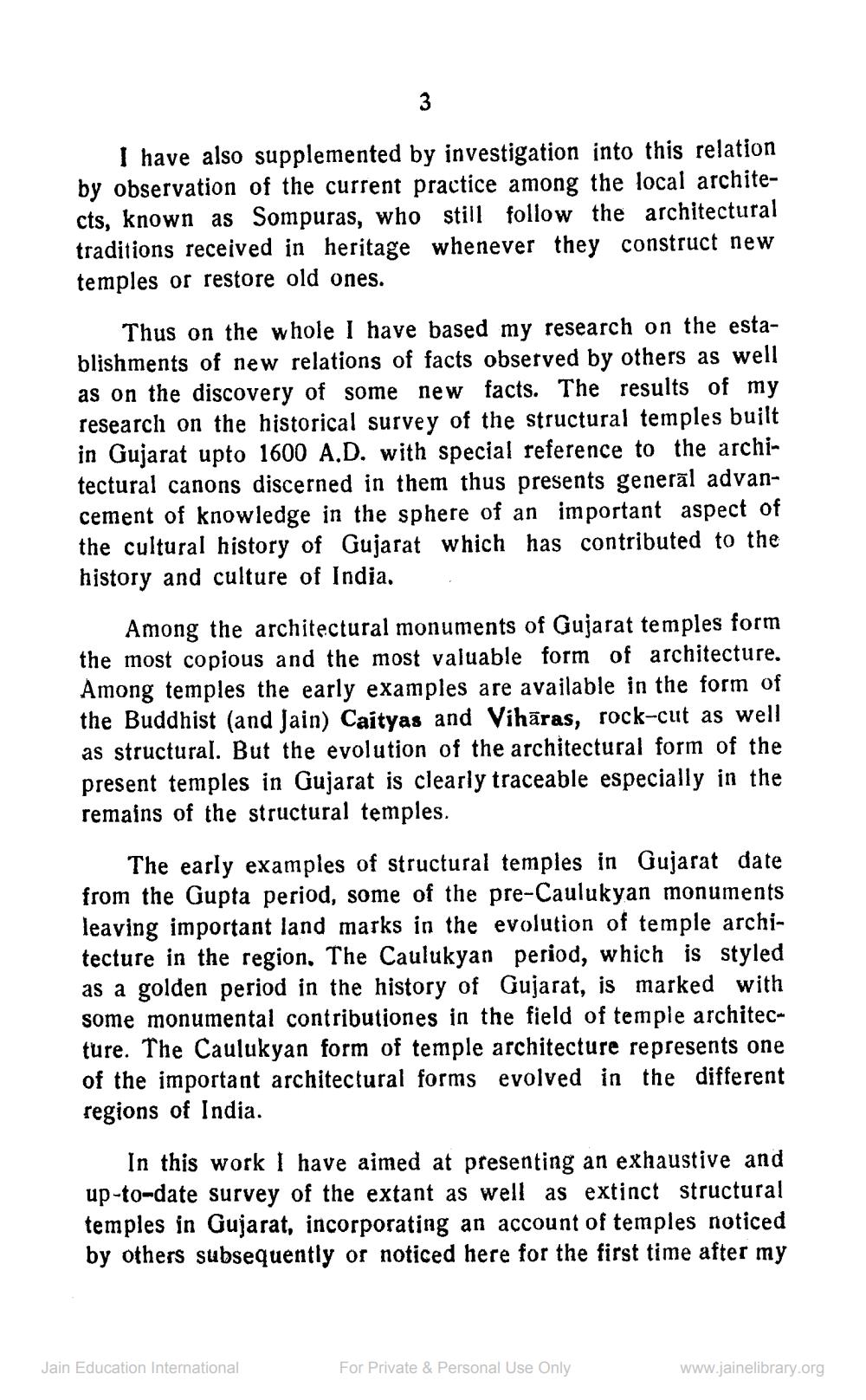________________
I have also supplemented by investigation into this relation by observation of the current practice among the local architects, known as Sompuras, who still follow the architectural traditions received in heritage whenever they construct new temples or restore old ones.
Thus on the whole I have based my research on the establishments of new relations of facts observed by others as well as on the discovery of some new facts. The results of my research on the historical survey of the structural temples built in Gujarat upto 1600 A.D. with special reference to the architectural canons discerned in them thus presents generāl advancement of knowledge in the sphere of an important aspect of the cultural history of Gujarat which has contributed to the history and culture of India.
Among the architectural monuments of Gujarat temples form the most copious and the most valuable form of architecture. Among temples the early examples are available in the form of the Buddhist (and Jain) Caityas and Vihāras, rock-cut as well as structural. But the evolution of the architectural form of the present temples in Gujarat is clearly traceable especially in the remains of the structural temples.
The early examples of structural temples in Gujarat date from the Gupta period, some of the pre-Caulukyan monuments leaving important land marks in the evolution of temple architecture in the region. The Caulukyan period, which is styled as a golden period in the history of Gujarat, is marked with some monumental contributiones in the field of temple architecture. The Caulukyan form of temple architecture represents one of the important architectural forms evolved in the different regions of India.
In this work I have aimed at presenting an exhaustive and up-to-date survey of the extant as well as extinct structural temples in Gujarat, incorporating an account of temples noticed by others subsequently or noticed here for the first time after my
Jain Education International
For Private & Personal Use Only
www.jainelibrary.org




